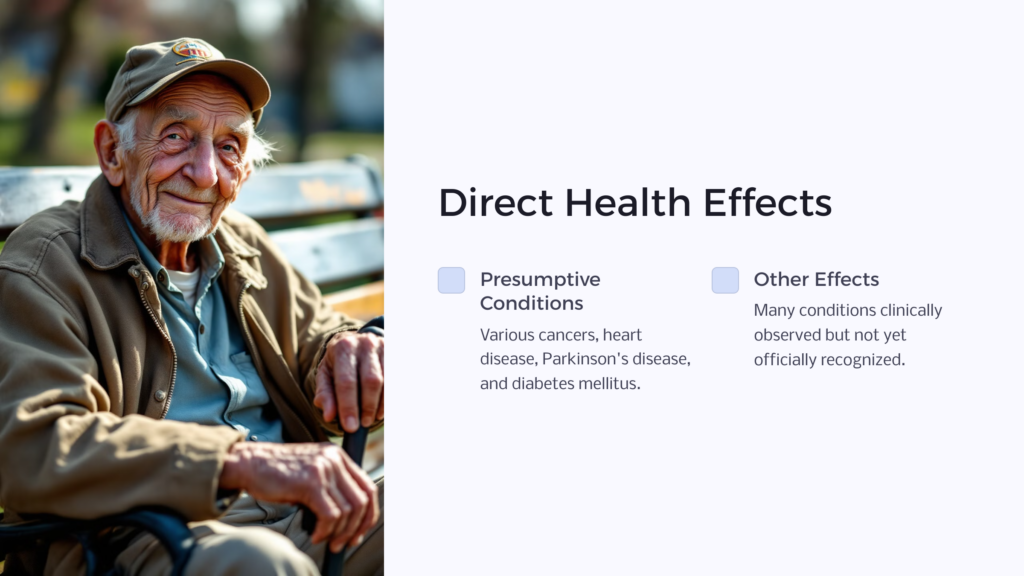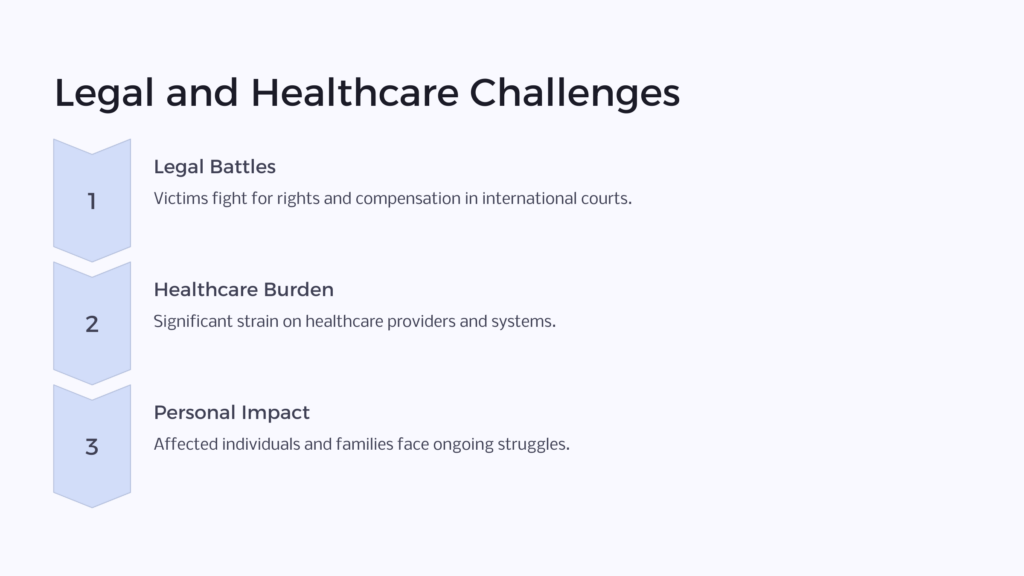The Vietnam War left an indelible mark on both political world history and on the health of those who were directly or indirectly involved. One of these marks was the widespread, destructive use of herbicides, such as Agent Orange. This chemical weapon was used by the U.S. military to clear vegetation hideouts of North Vietnamese fighters. Years later, health effects were seen in veterans and Vietnamese citizens, and more recently, possible health effects in their children and grandchildren.
Agent Orange, named after the orange stripe on storage containers, was one of the “rainbow herbicides” used by the U.S. military. However, what wasn’t known at the time was that Agent Orange was contaminated with a highly toxic dioxin, known as TCDD. In recent years, studies have started to suggest that the children and grandchildren of those exposed to Agent Orange may also be experiencing health problems as a result, introducing the concept of second-generation Agent Orange symptoms.
A Closer Look at Agent Orange
Agent Orange is a 50:50 mixture of two herbicides, namely 2,4,5-T and 2,4-D. The harmful contaminant, dioxin TCDD, originates from the 2,4,5-T component during the manufacturing process. Dioxin TCDD is a powerful toxin known to interfere with hormonal systems in the human body, leading to a diverse range of health problems.
Exposure to Agent Orange occurred mostly through skin contact or ingestion due to the spraying of these chemicals over dense jungles and crops. However, inhalation was also possible due to the aerial dispersion of the herbicide. Exposure affected not only the military personnel involved in the spraying but also civilians living in sprayed areas.
Direct Health Effects of Agent Orange Exposure

The health effects of those directly exposed to Agent Orange are widespread. The U.S. Department of Veterans Affairs has identified a list of “presumptive conditions” associated with exposure to Agent Orange. These include, but are not limited to, different types of cancers, heart disease, Parkinson’s disease, and diabetes mellitus. Many other conditions have been clinically observed in exposed individuals but have not yet made the list of presumptive conditions due to lack of evidence.
Studies and Observation: 2nd Generation Effects
Emerging research and aspiring scientists have started to dig into the concept of second-generation Agent Orange symptoms. These symptoms are believed due to biological mechanisms involving genetic changes and epigenetic modifications—changes to gene expression rather than the genetic code itself—from exposure to dioxin.
Several studies have started to show health effects in children of exposed individuals, such as spina bifida, certain types of cancer, and birth defects. A more extensive health problem common among descendants includes learning disabilities. Researchers also report a wide range of congenital disabilities and health problems that affect various body systems.
Case Studies
A study conducted in Vietnam found that areas sprayed with Agent Orange had a higher number of people with disabilities and congenital abnormalities. In the United States, cases were reported, including a veteran whose children and grandchildren suffered from medical problems such as autism, a rare heart defect, problems with joints, and a series of reproductive health problems.
Many of these cases do drum up sympathy and call for action, but individual case studies do not, unfortunately, provide conclusive scientific data. Nonetheless, they provide a human perspective on a complex and technical issue, which can be very powerful.
Legal and Health Care Issues

The vast manifestation of health problems associated with Agent Orange exposure has implications on several levels. Victims face legal challenges when fighting for their rights and compensation, not to mention the burden on healthcare systems.
At international courts, various legal battles have been waged over the use of Agent Orange. In terms of health care, the significant number of health problems following exposure places a burden on healthcare providers and systems, not to mention the affected individuals and their families.
VA Disability Benefits for Agent Orange

The VA provides disability benefits to veterans who were exposed to Agent Orange. To qualify, veterans must have served on the ground in Vietnam during the war and have medical evidence showing a diagnosis of diseases the VA associates with Agent Orange exposure like non-Hodgkin’s lymphoma, Parkinson’s disease, or ischemic heart disease. The level of disability benefits awarded depends on the severity of the veteran’s condition. Veterans and survivors of deceased veterans may be eligible for monthly tax-free compensation, health care, and other services. Applying involves submitting service records, medical evidence, and other documents to the VA.
Conclusion
Research on second-generation effects of Agent Orange is ongoing. It points to potential heritable health effects, but the available data are not yet substantial enough to prompt policy change. Nonetheless, the possibility of transgenerational effects from dioxin exposure underscores the importance of continued study and support for affected individuals.
The long-term effects of Agent Orange are a sad but important history lesson. Fortunately, this past is being used to fuel study and support for those affected, offering hope for a better future.
 Benefits.com Advisors
Benefits.com Advisors
With expertise spanning local, state, and federal benefit programs, our team is dedicated to guiding individuals towards the perfect program tailored to their unique circumstances.
Rise to the top with Peak Benefits!
Join our Peak Benefits Newsletter for the latest news, resources, and offers on all things government benefits.





















